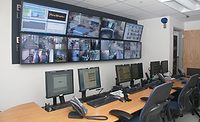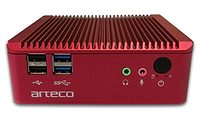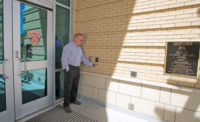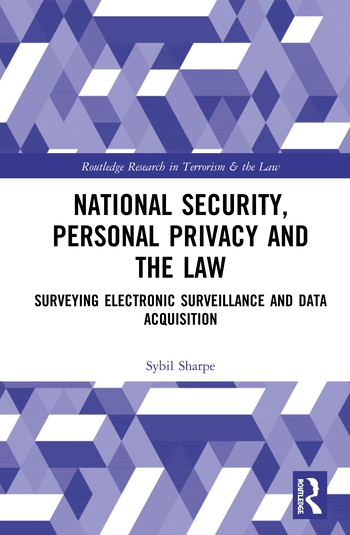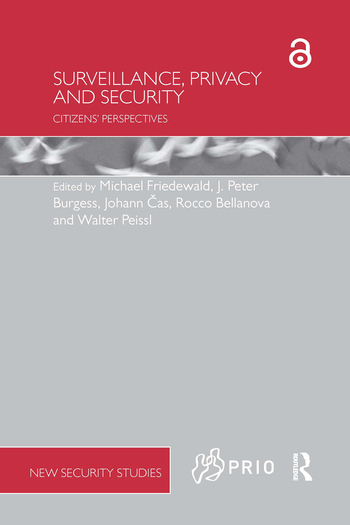Finding Ruggedized Security Solutions for Difficult Installations

Night time outdoor security is tricky. It often calls for special intrusion detection and security video technology. Photo courtesy of Reconyx

Stainless steel camera housings provide a higher level of protection for security video cameras. Photo courtesy of Videotec

There is nothing chicken about an access control system designed to protect a chicken coop. And there are lessons for security executives who have to provide security in rugged terrain.
Photo courtesy of Maddry Associates

Some ruggedized security technology comes from photographing game in the wild. Photo courtesy of Reconyx




|
The IP Numbers Count IP (or “Ingress Protection”) ratings are an international standard used to define levels of sealing effectiveness of enclosures against intrusion from foreign bodies and moisture. The numbers that follow IP each have a specific meaning. First Digit (intrusion protection) 0 No special protection. 1 Protection from a large part of the body such as a hand (but no protection from deliberate access); from solid objects greater than 50mm in diameter. 2 Protection against fingers or other object not greater than 80mm in length and 12mm in diameter. 3 Protection from entry by tools, wires etc, with a diameter of 2.5 mm or more. 4 Protection against solid bodies larger than 1mm (fine tools/small etc.). 5 Protected against dust that may harm equipment. 6 Totally dust tight. Second Digit (moisture protection) 0 No protection. 1 Protection against condensation. 2 Protection against water droplets deflected up to 15° from vertical, 3 Protected against spray up to 60° from vertical. 4 Protected against water spray from all directions. 5 Protection against low pressure water jets (all directions). 6 Protection against string water jets and waves. 7 Protected against temporary immersion. 8 Protected against prolonged effects of immersion under pressure. |
While harsh environments are not that common, how security responds and what technology works best are lessons to be learned.
What do a chicken coop, a highway bridge, Serbian pipeline and an off-shore oil drilling platform have in common? When it comes to security and life safety, they share the challenge of a harsh or dangerous environment that calls for intrusion detection, access control and security video technology that can handle the unique tasks.
Solutions range from fiber optic fences and miniature radar to ruggedized card readers, camera enclosures and heaters as well as specially built stainless steel camera housings along with stainless steel wipers and washer tanks.
While harsh environments, difficult terrain and tricky locations are not that common, how security responds to these challenges and what technology works best are lessons for many enterprise security professionals that may now or in the future face similar situations.
Take, for instance, those chickens.
Integrator Casey Smeller of Selector Products just provided access control and monitoring for his client’s chicken coops. Casey says that, without security, the chickens would remain in peril. If trapped inside the coops at the wrong time, the birds could potentially be exposed to dehydration and heat exhaustion. If trapped outside the coops at the wrong time, they could be exposed to extreme temperatures, dangerous predators or poachers.
Outdoor Access Panel
As an interim solution, Casey initially installed motorized chicken coop doors and controlled the doors with a mechanical timer so they would open and close at preset times. To overcome the limitations of a door timer, Casey installed an access control panel from ZKAccess linked to a camera. Now the doors are on a time schedule that can be adjusted for daylight saving time or changed easily to account for seasonal sunrise/sunset variances as well as keep accurate time regardless of prolonged power outages. Door status can be visually inspected on a monitor and subsequently open or close the doors remotely, as needed. Additionally, Casey added a pan-tilt-zoom (PTZ) surveillance camera so the chickens can be observed when they’re outside their coops.
The final steps: the addition of a door contact to confirm door status other than visually along with lighting control.
Casey says such technology can be used in any terrain. Related ruggedized solutions, for example, work to protect indoor areas such as data center environments but they have to be flexible enough and integrate access, video and intrusion, he says.
Stainless steel camera housings along with stainless steel wipers and washer tanks have been installed on the Champlain Bridge and the Jacques Cartier Bridge, crossing the Saint Lawrence River and connecting Montreal (Canada) boroughs on the South Shore. The gear has the capacity to resist aggressive atmospheric conditions for the presence of acidic pollutants or marine corrosion.
Security and Life Safety
For the Casablanca Oil Platform, there is a security system that ensures early detection of hydrocarbon leaks, providing life safety and environmental results in addition to security.
For pipelines stretching from the Serbian border to the Adriatic Sea, day/night cameras with specialty housings remotely controlled by video serves do the trick. Environmental heat during summer time and the famous local Bora wind can be severe, but thanks to its security technology, there is an efficient cooling system and internal enclosure temperature is reduced.
An integrated approach is important. But so is protecting the security data sent from sensors and other protection gear, according to Angela Oberman, senior channel manager, critical infrastructure at Honeywell Security Group. For ruggedized security for difficult terrain, there is a cybersecurity risk of the data from field panels, for instance. Wired is better between the reader and panel. There are housings that can be used to protect readers and special built outdoor-rated readers as well as field distribution boxes that handle challenging situations or locations, adds Oberman. There are ruggedized panels available that protect from corrosion.
Ruggedized access control readers can feature stainless steel construction, epoxy encapsulated electronics, audio-visual feedback – all of which aim at reducing repairs and replacement due to vandalism and harsh environments.
Fencing is another option in difficult terrain. Beyond the hardware, there are technology add-ons such as fiber optic sensor technology for fence-line perimeter monitoring.
In some designs, multiple simultaneous events, such as coordinated intrusions, can be independently detected and localized. Reconfigurable virtual detections zones can be linked to camera presets and assigned individual sensitivity settings.
When a fence sensor is cut, either in an attempt to defeat security or through accidental damage, the system retains the ability to detect and pinpoint intrusion attempts up to the cut point. A self-healing sensor ring can be implemented in a closed loop configuration. The same fiber optic cable can be used for video and data transmission.
Radar Protection
Solid state, electronic scanning, long range ground surveillance radar can also provide security in harsh environments. Such technology detects and tracks people and vehicles within a set range. There also is wide area surveillance radar. One source is Flir, which also has thermal cameras.
Oberman points out that radar technology sees beyond a fence and sees through the weather. Short range radar solutions can mount on a pole. They are hard to sabotage and can tilt down or up. There is filtering so an alert is sent out after analytics. It is situational awareness with longitude and latitude.
Concerning cameras, there are enclosures, housings, heaters and fans.
When it comes to heat and cold, according to Tim Ferrian of Pro-Tec Design, look for devices that operate between minus 40°F and 118°F. Some equipment can operate in even colder or hotter temperatures, sometimes with built-in heaters or fans. Alternatively, some manufacturers offer separate housings with built-in heaters for cold climates or built-in fans for hot or humid climates. Also look at specifications that indicate a cold start-up time.
Ironically, enclosures can raise the internal temperature and can expose a security device to moisture. So, in some cases, it makes sense to have internal fans and adequate venting. Sun shielding is also important.
The ultimate: nitrogen-pressurized stainless steel casings for surveillance and remote monitoring applications in such difficult terrain as marine, mining, oil and gas environments as well as food, medical and clean room manufacturing facilities. Such rust-free cameras can resist the corrosive effect of sea water and cleaning chemicals and withstand high-pressure steam cleaning. Pressurized nitrogen prevents internal condensation. Some pressurized cameras require frequent recharging maintenance, however.
Vibrations can be a challenge when it comes to security video. In some applications, there are belt-driven pan-tilt-zoom cameras that bypass vibration-vulnerable plastic gears.
Role of Analytics
Even in difficult terrain, video analytics can play a key role.
At Canadian oil refining facility, fixed video analytic thermal cameras from Videotec Security provide long-range detection around the refinery’s perimeter, including long range cameras with infrared illuminators to light the target. The design creates a thermal detection and assessment solution over large outdoor areas without visible lighting. Similar systems have been deployed to protect electric substations for detecting intruders entering a facility while also sending alerts when on-site personnel get too close to high-voltage equipment. In these applications, accurate detection is combined with real-time video assessment to ensure that both security and safety requirements are met.
One difficult terrain area is a sports stadium.
MetLife Stadium in East Rutherford, New Jersey, uses state-of-art megapixel video to handle most situations. In a recent interview with the Associated Press, Daniel DeLorenzi, director of security and safety services at MetLife Stadium, notes “We can validate people’s accounts of any dispute, see what actually happened.” It’s also used to identify and quickly handle medical issues in the building.
Long-Tech Reach
Cameras monitor concourses, escalators, outside the building and the parking lots. The technology can reach a quarter mile away. Cameras are from Arecont Vision and system management is by Genetec.
MetLife Stadium mirrors its solution with the waste and water facilities in Lakeland, Florida. That city’s IT department initiated a city-wide expansion project, expanding and upgrading to IP video surveillance, access control and automatic license plate recognition systems in one solution, according to Alan Lee, security and safety systems supervisor, Public Works Facilities for the city of Lakeland.
Infrared cameras are a solid choice for stand-alone surveillance situations where no power or communication lines exist. True covert infrared night time illumination allows the camera to remain undetected. One unique source is Reconyx, which provides security technology based on its success with wild game imaging.
In highly corrosive environments, there are cameras that are passivated and electropolished to create a shell in the surface that makes the product impervious to rusting and corrosion. Weatherproof rating IP66 offers a total protection from the most severe atmospheric conditions. Seethe sidebar on IP ratings.
In one example of cameras built for harsh situations, technology includes day/night cameras and dual vision solutions with thermal cameras for monitoring in total darkness, through fog, rain, heavy smoke or in the far distance. Wipers are integrated, with optional washer tank and pump kits to ensure a constant cleaning of the front window. The operating temperature ranges from minus 40°F to 140°F.
Bridging to the Cloud
Cloud bridges are one way to connect security cameras and cover challenging terrain. Such enhanced systems can monitor live camera feeds over a local network by connecting a cloud bridge either directly to a local display monitor or via Wi-Fi to any device, according to Michael von Hauff of Osprey Informatics. Users can also stream archived video from the cloud bridge. This local streaming capability supplements existing remote access via any computer or mobile device. It also secures all data sent from connected cameras via a virtual private network, which also protects the cameras from the public network.
Maintaining cameras in challenging locations or terrain is a chore. So in some applications there are lowering systems. One example is from MG Squared of Birmingham, Alabama. Whether there are cameras deployed over 200 feet above the waterway on the support structure of the Sunshine Skyway Bridge in Tampa or high end thermal cameras monitoring critical infrastructure, U.S. sea ports and military bases, lowering systems provide a safe and cost effective maintenance solution.
Rare but growing in attention are drones or unmanned aerial vehicles, which can rise above difficult terrain. One company targeting security applications is Stampede. Reinforcing its commitment to make camera drones a safe and integral part of the many vertical markets including security, law enforcement and life safety, Stampede recently formed a strategic alliance with Unmanned Vehicle University to develop certification programs for manufacturers and customers seeking to incorporate camera drones into their businesses.
Drones are being used or tested in numerous security and law enforcement applications. At the same time, they have been involved in troubling safety and security incidents at sites ranging from airports to stadiums. While the Federal Aviation Administration deliberates over regulations regarding unmanned aerial vehicles, some states are moving on localized rules.
Looking for a reprint of this article?
From high-res PDFs to custom plaques, order your copy today!




